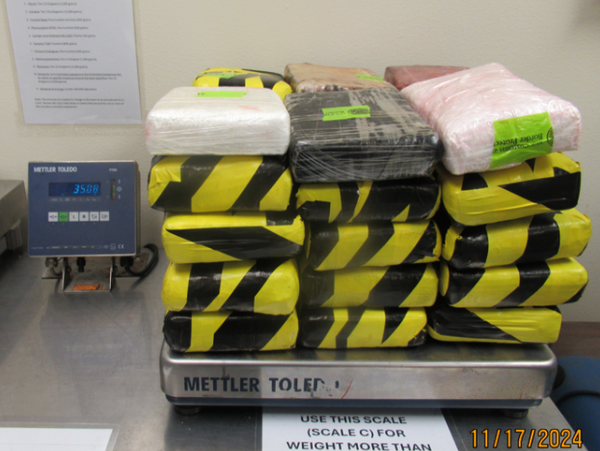/shutterstock_1606529806.jpg)
By the end of 2022, there were only four trillion-dollar companies —Apple, Microsoft, Saudi Aramco, and Google—with Amazon just scraping against the threshold. At that time, Nvidia (NVDA) was the leader of the discrete GPU market and a massive player in the tech industry—yet was nowhere near the $1T mark.
While its niche wasn’t exactly a money pit, and prices took a hit in 2022, NVDA was growing at a slower pace. The company also saw notable bumps in its data center segment thanks to increased demand from neural networks and artificial intelligence training. The segment surpassed its GPU business right around that time.
Analysts predicted that the GPU maker—valued at around $364 billion by the end of 2022—could potentially triple its market cap and reach $1 trillion sometime around 2030.
Now, here we are, two years later. Nvidia blew past the trillion-dollar mark last year, becoming the 5th US company to join the $1T club, and has been consistently exceeding expectations ever since. The current market cap sits at $1.67 trillion, perhaps even more in pre-market trading—and prices show no signs of slowing, especially with its recent quarterly win.
How did NVDA do it? And could it capture lightning in a bottle a second time and reach $2,000? Let’s talk about it.
A Brief History Of Innovation
Nvidia had a string of firsts in the tech industry. In 1999, the company unveiled GeForce 256, the “world's first-ever graphics processing unit” (although some argue that Sony beat it to the punch by five years). I remember it well as I had to save up two months of my allowance to pay for it.
Eight years later, it pioneered the Compute Unified Device Architecture (CUDA) parallel-computing platform, dramatically increasing GPU performance. Furthermore, it opened its GPUs for general-purpose utilization, essentially making its products a combined CPU (central processing unit) and GPU.
CUDA was an important breakthrough for Nvidia and would be instrumental to its recent success. The platform would allow GPU utilization for computation-heavy tasks like cryptocurrency mining, simulations, rendering—and, most importantly, artificial intelligence and machine learning algorithms.
Recent Results
Nvidia released its 4th-quarter report yesterday. Headlining the results was a 265% revenue growth to the tune of $22.10 billion, driven primarily by a massive 409% data center growth YoY, which accounts for 83% of the companies' total revenue.
The last three quarters saw accelerated growth as demand for high-performance chips that can satisfy power-hungry AI platforms continues to skyrocket.
Source: Nvidia
Nvidia expects revenue to hit $24 billion next quarter. This represents an 8% growth from the previous quarter, which I think is quite modest considering this recent quarter saw a 22% growth, while Q3'24 increased by 32%. This might be a signal that Nvidia is expecting a slowdown in 2024.
Is $2,000 Per Share In The Cards For Nvidia (NVDA)?

As of now, Nvidia is the go-to company for all things AI. Market share estimates are all over the place, but we can comfortably place it at around 70-90%. Nvidia is officially valued at $1.67 trillion. However, after-market trading is pushing the market cap past $1.7 trillion—or around $771 per share.
That’s all well and good, but does that mean that Nvidia can reach $2,000 anytime soon?
Going by pure numbers, the $2,000 share price translates to a $4.94 trillion market cap. For context, Microsoft, which recently overtook Apple, has a market cap of $2.99 trillion.
This is a bit of a tangent, but humor me. MSFT reached $1 trillion in 2019 and $2 trillion in 2021. There’s a good chance it will breach $3 trillion this year. Meanwhile, Apple got to $2 trillion first in 2020, and it’s still hovering near $2.9 trillion. That’s about two to four years between each trillion mark. So, going by the numbers, Nvidia could breach $2 trillion, or roughly $811 per share, next year. But this is by no means a comprehensive analysis.
Besides, it’s eminently more likely to get to the $2 trillion point very soon, as it’s already trading around $760 before the bell. $1,000 per share seems like a cakewalk after that.
However, for Nvidia to get to $2,000, the company would have to continue to grow its revenue at the same pace as it has, which will likely not happen any time soon, given its slowing growth guidance.
Additionally, there are risks like softened AI demands (though that won’t happen anytime soon) and increased competition.
Case in point: Intel just announced a partnership with Microsoft to manufacture AI chips. They won’t be the only competitors coming out of the woodwork in the next few years.
Final Thoughts
So, $2,000 for Nvidia might still be far off, but not impossible, and it doesn't make it any less of a great investment opportunity.
Analysts recommend it as a Strong Buy, with high estimates reaching $1,200.
On the date of publication, Rick Orford did not have (either directly or indirectly) positions in any of the securities mentioned in this article. All information and data in this article is solely for informational purposes. For more information please view the Barchart Disclosure Policy here.






